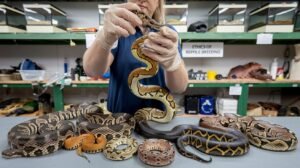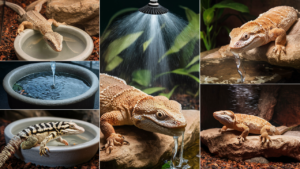In the journey of pet ownership, understanding the nuances of training and care for various animals is essential. This article delves into four crucial topics: rabbit litter training, dog obedience commands, cat declawing alternatives, and appropriate reptile enclosure sizes, providing insights to enhance the well-being of your beloved pets.
Litter Training Your Rabbit
Litter training a rabbit is essential for maintaining a clean home and ensuring the health of your pet. Benefits include minimizing mess and odors, promoting hygiene, and fostering a strong bond between owner and pet. To successfully train your rabbit, utilize a litter box that’s easy to access, made from safe materials, and appropriately sized. Place the box in a favored corner, as rabbits naturally choose specific areas for their waste. Use positive reinforcement, such as treats and affection, to reward correct behavior, while gently guiding them back to the box if accidents occur. Understanding your rabbit’s natural habits will further facilitate training. Regularly clean the litter box to maintain a healthy environment, and keep an eye on your rabbit’s behavior, adjusting the setup as necessary for their comfort and success.
Essential Dog Obedience Commands
Dog obedience commands, such as ‘sit’, ‘stay’, and ‘come’, are essential for fostering a safe environment and strengthening the bond between dog and owner. Positive reinforcement strategies, paired with consistent training and patience, greatly enhance learning and behavior modification. Implementing these commands helps manage dogs in various situations, ensuring their safety and well-being while reinforcing their trust in their owners.
Alternatives to Cat Declawing
The controversial practice of declawing often leads to long-term health and behavioral issues for cats. Instead, consider humane alternatives: regular nail trimming, encouraging use of scratching posts, and applying soft nail caps. These methods effectively manage scratching while enhancing feline welfare by preserving their natural behaviors.
Understanding Reptile Enclosure Sizes
Proper enclosure size is vital for reptiles as it directly influences their health and behavior. Sufficient space allows for movement, temperature regulation, and stress reduction, which are crucial for their well-being.
General guidelines suggest that small species like anoles require at least a 10-gallon tank, while larger species, such as iguanas, may need enclosures exceeding 100 gallons. Providing ample space is essential for their natural activities.
An adequately sized enclosure fosters adequate basking areas and cooler zones, promoting essential thermal gradients. This allows reptiles to regulate their body temperature and prevents overheating, leading to optimal health.
Enrichment is key; including climbing structures, hiding spots, and natural substrates not only improves mental stimulation but also mimics the reptile’s natural environment, enhancing their quality of life and encouraging normal behavioral patterns.
Conclusions
In summary, caring for pets involves understanding their unique needs—from proper litter training for rabbits and essential commands for dogs to humane alternatives for cat declawing and appropriate enclosure sizes for reptiles. By prioritizing these aspects, pet owners can foster healthier, happier lives for their furry and scaly companions.



